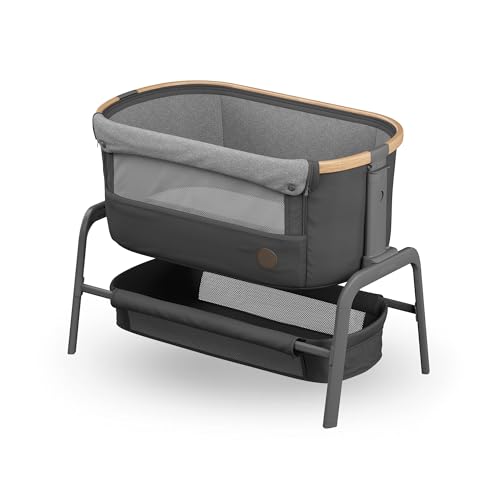How To Make An Amazing Instagram Video About Tots And Cots
페이지 정보
작성자 NM 작성일25-08-22 18:07 (수정:25-08-22 18:07)관련링크
본문
Tots and Cots: A Comprehensive Guide for Parents
When it concerns ensuring a safe and comfortable sleeping environment for infants and young children, the options moms and dads make-- ranging from cribs to cots-- can substantially affect their wellness. Today's article dives deep into the intricacies of picking the best sleeping plans for tots, emphasizing security, design, performance, and how these choices progress as a child grows.
Understanding Tots and Cots
Tots usually describe young kids, especially young children aged in between 1 to 3 years, while cots are the sleeping arrangements particularly created for babies and toddlers. The appropriate sleeping equipment for this age includes numerous kinds of cots, cribs, and young child beds.
Types of Cots
Various styles exist to satisfy the diverse requirements of both moms and dads and kids. Below is a list describing the most common kinds of cots available:
Standard Crib
- A conventional crib is developed for infants and typically includes sides that can be gotten used to various heights.
Convertible Crib
- This kind of crib can convert into a young child bed, daybed, or full-sized bed as the kid grows, making it a long-lasting investment.
Portable Crib
- Likewise referred to as travel cots, these are light-weight and quickly foldable, perfect for traveling or smaller home.
Co-Sleeper
- A co-sleeper crib connects to the side of the parents' bed, allowing for simple gain access to while ensuring the baby has a separate and safe sleeping area.
Toddler Bed
- A toddler bed is a small bed that resembles a standard bed but is developed specifically for young children, normally featuring safety rails.
Mini Crib
- Mini cribs are smaller sized than basic cribs, making them a great alternative for tight spaces, however they are appropriate for infants only.
Security Considerations
Ensuring safety is paramount when selecting a cot for a kid. Here are crucial security guidelines parents must consider:

- Check for CPSC Certification: Ensure that the cot follows the Consumer Product Safety Commission (CPSC) standards.
- Prevent Drop-Sides: Cots with drop-sides have actually been linked to safety risks, and the latest safety policies restrict them.
- Use a Firm Mattress: A firm bed mattress minimizes the risk of suffocation and ought to fit comfortably within the cot.
- Keep Bedding Simple: Use a fitted sheet and avoid pillows, comforters, and stuffed animals that can posture suffocation hazards.
- Follow Weight and Age Guidelines: Ensure the child has actually not gone beyond the cot material options's weight limitation and is still within the advised age.
Transitioning from a Cot to a Toddler Bed
The shift from a cot to a toddler bed can be an emotional milestone for both moms and dads and children. Here are steps to reduce the transition:
Timing
Choosing when to transition can be subjective, but it's generally suggested to make the switch between 18 months and 3 years, based upon aspects like:
- Physical Ability: If the child is climbing out of the cot.
- Potty Training: Consider transitioning if the kid is toilet training and requires easier access.
- Habits: Exhibiting signs of maturity, such as following directions or revealing a desire for self-reliance.
Tips for Making the Transition Smooth
Include Your Child: Let the kid pick their brand-new bed linen or bed design to instill enjoyment about the change.
Keep Routine Consistent: Maintain the child's bedtime routine to supply convenience during this period of modification.
Explain the Change: Discuss the transition to a young child bed positively, making it sound like an excellent experience.
Precaution: Place the bed against the wall or use bed rails to avoid falling throughout sleep.
Picking the Right Bed
When picking a toddler bed, moms and dads require to think about aspects like:
- Height: Low-profile beds are perfect for young children who might fall out during sleep.
- Sturdiness: Ensure the bed can hold up against active play along with sleep.
- Design and style: Choose a style that matches the kid's space and is interesting the child.
Selecting the best cot for your child can be a complicated procedure, however understanding the options readily available, key safety considerations, and the best timing for transitioning to a toddler bed can make this journey simpler for moms and dads. Investing effort and time into these choices will ensure that your child has a safe, comfy, and nurturing sleep environment.
Frequently asked questions
1. What is the distinction between a cot and a crib?
- A cot is typically a smaller bed designed for younger toddlers, while a crib is a larger bed that is normally appropriate for babies approximately 3 years old.
2. When should I move my child from a crib to a toddler bed?
- The transition time is usually between 18 months and 3 years; this change is based on the child's physical capabilities and behavioral signs.
3. How can I guarantee my kid is safe while sleeping?
- Constantly follow security requirements, use a firm mattress with a simple bedding plan, and monitor the cot's weight limit.
4. What should I do if my kid tries to climb up out of the cot?
- If your child is climbing out, it may be time to consider transitioning to a toddler bed to prevent falls.
5. Can I utilize the very same bed mattress when transitioning?
- Normally, it is best to change the crib bed mattress with one that specifies to the young child bed. Ensure it fits snugly and abides by safety standards.
By considering these aspects, parents can model healthy sleep habits and provide their children with a safe environment that promotes relaxing sleep. Purchasing quality sleeping plans will contribute to the child's general development and happiness.
댓글목록
등록된 댓글이 없습니다.

